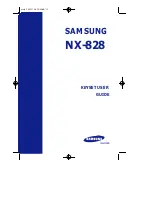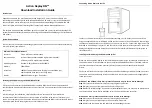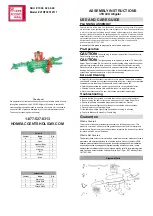
User's Guide _______________________________________________________________________
106
_____________________________________________________ M210296en-A
MOR = (4
×
0.1)
×
NEW MOR+(1-(4
×
0.1)
×
OLD MOR
where
OLD MOR =
The previous average value
NEW MOR =
A new instantanous value
The lower the signal value, the less the new instantaneous value is
included in the average. The minimum influence of the new sample is
10 %. This filtering reduces noise in the output values.
Detecting Precipitation
The precipitation onset detection is based on measuring the signal
peaks caused by precipitation droplets. The peak amplitudes that are
detected during 10 minutes are summed. When the sum exceeds a
threshold value, the sensor will indicate precipitation. The threshold
value is the
Precipitation limit
parameter and can be changed by the
operator.
In addition to the optical detection, the DRD12 ON/OFF signal is used
in lowest precipitation intensities. The DRD12 is also used for some
cross-checking of the optical detection.
The precipitation ending is detected when the summed optical signal
amplitudes decrease below another, lower threshold value. The
summing interval depends on the detected precipitation intensity.
Typically, the FD12P will detect precipitation ending within a few
minutes but in low intensity precipitation the detection time may reach
10 minutes.
Precipitation Intensity
The light scattering from a precipitation particle is proportional to the
volume of the particle. This proportionality is quite stable for rain
because the droplets are all quite spherical. In solid precipitation, the
shape of particles varies but is proportional to the average volume of
the particles.
The optical value of the precipitation intensity is calculated from the
distribution data of signal change and then scaled by multiplying with
the
Rain intensity scale
, which is an adjustable parameter. The optical
intensity value is proportional to the volume of the detected particles.
















































